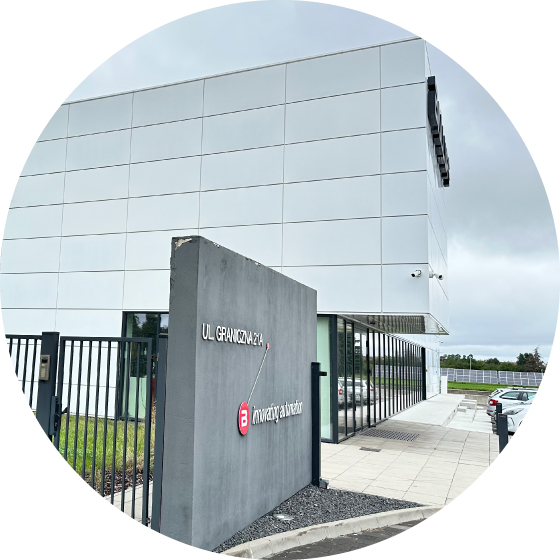What is the difference between red light and blue light in object detection?

Reading Time: minutes
Light plays a key role in optical sensor technology, enabling accurate detection of a variety of objects. In this article, we will discuss the differences between red light and blue light and indicate in which situations a Blue Light sensor will work best.
Red light and blue light differ primarily in wavelength. Red light has a wavelength of about 627-780 nm, while blue light is in the range of 436-495 nm. These differences affect how light interacts with different materials, as well as the ability of sensors to detect these objects.
Effect of wavelength on object detection
The wavelength of light is crucial to the detection process. Red light is often used in standard sensors because of its ability to penetrate different materials. It is effective in detecting objects with bright colors and matt surfaces.
Blue light, on the other hand, with its shorter wavelength, is more effective at detecting dark, transparent and shiny objects. The shorter wavelength of blue light does not scatter and reflects better from these surfaces, enabling more accurate and reliable detection.
Balluff BOS 6K Blue Light Sensors
Optoelectronic sensor technology BOS 6K Blue Light takes advantage of the properties of blue light to enhance their performance especially with hard-to-detect materials or objects. The sensors are state of the art industrial sensors. They are dustproof and waterproof with IP69 protection certification. The BOS 6K Blue Light are designed for higher precision and reliability, making them ideal for applications where standard red light sensors fail.
They will perform to a high level of accuracy and repeatability not only with the most difficult materials, but also with demanding production conditions.
Why choose sensors with blue light?
-
Better detection of dark objects. The shorter wavelength of blue light enables more effective detection of dark surfaces, which can be difficult to see by sensors using red light.
-
Detection of transparent objects .Blue light is less likely to pass through transparent materials, allowing them to be accurately detected.
-
Effectiveness on glossy surfaces.With better reflection of blue light, Blue Light sensors are more reliable in detecting shiny objects.
Practical applications of BOS 6K Blue Light sensors
BOS 6K Blue Light sensors are widely used wherever precise detection is crucial to production efficiency and quality.
If you would like to learn more about BOS 6K Blue Light sensors and their applications, please contact us. We offer technical support and assistance in selecting the right solution for your application.
Keywords
- Industrial Automation
- Sensor technology
- Efficient production
Author

Balluff Sp. z o.o.
We have been active on the Polish market for more than 25 years. We serve our customers from Pomerania to the Tatra Mountains, providing first-class service and technical support. We are also present online, where we share our knowledge about the latest implementations, industry trends, events or technical aspects of our solutions.
16 Contributions
Comment
Popular posts
What exactly is IO-Link?
Sensors for Detecting Transparent Media
Precision gear system assembly line for the manufacture of residential water meter mechanisms
Automation for beginners - Balluff guide
Contact form
Do you have any questions or suggestions? We are at your disposal.
Balluff Benelux
-
Hintham 117d
5246 AE Rosmalen, Netherlands
Please contact us:
[email protected]
